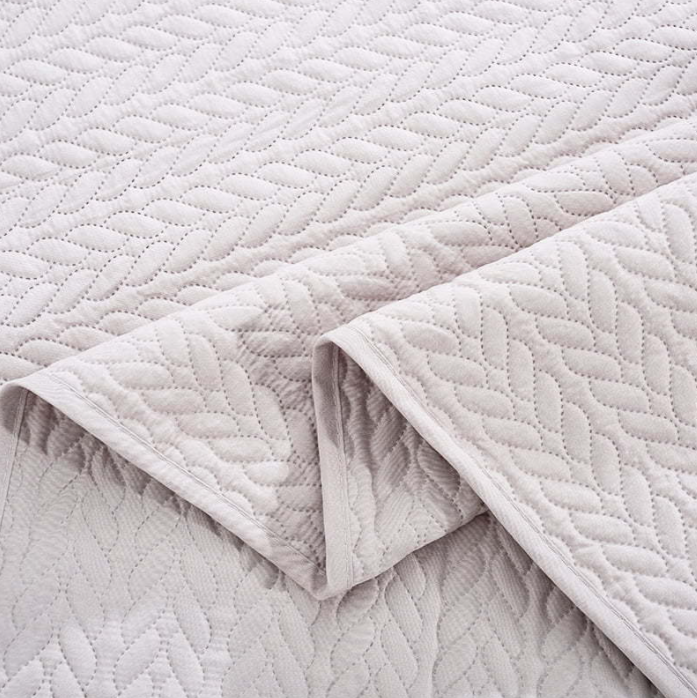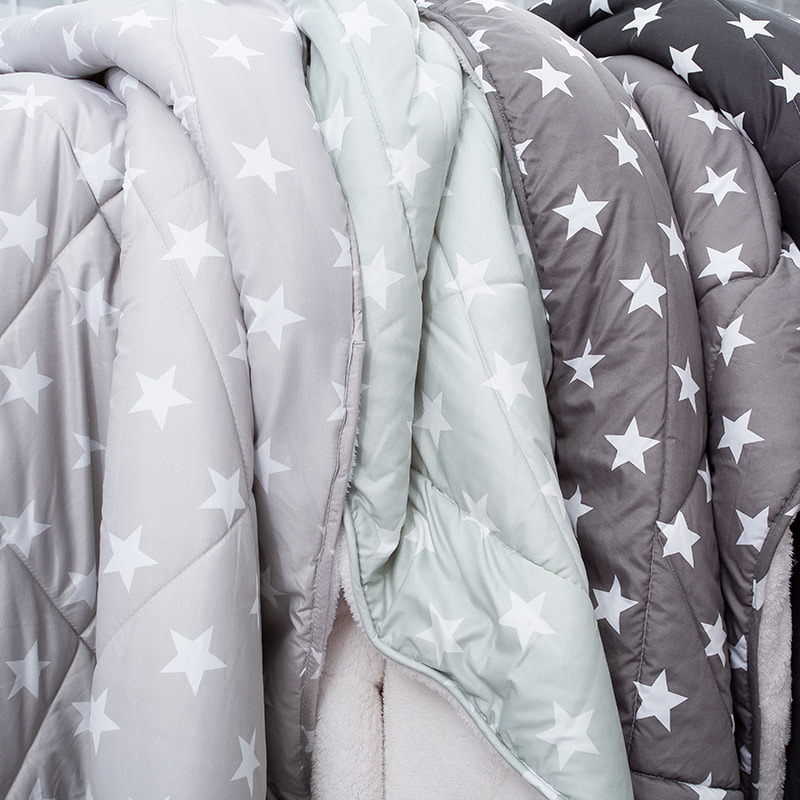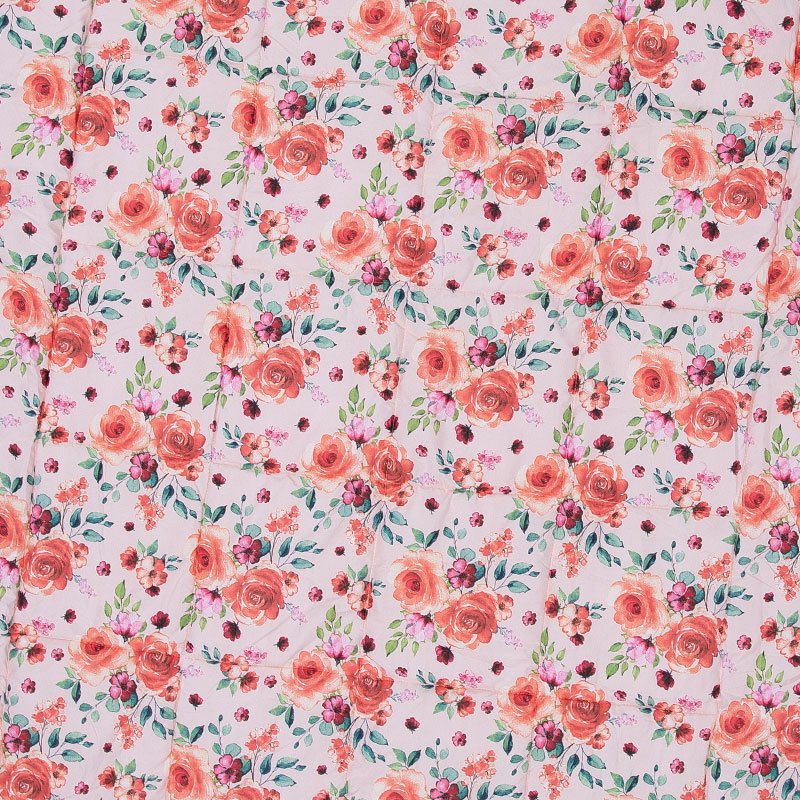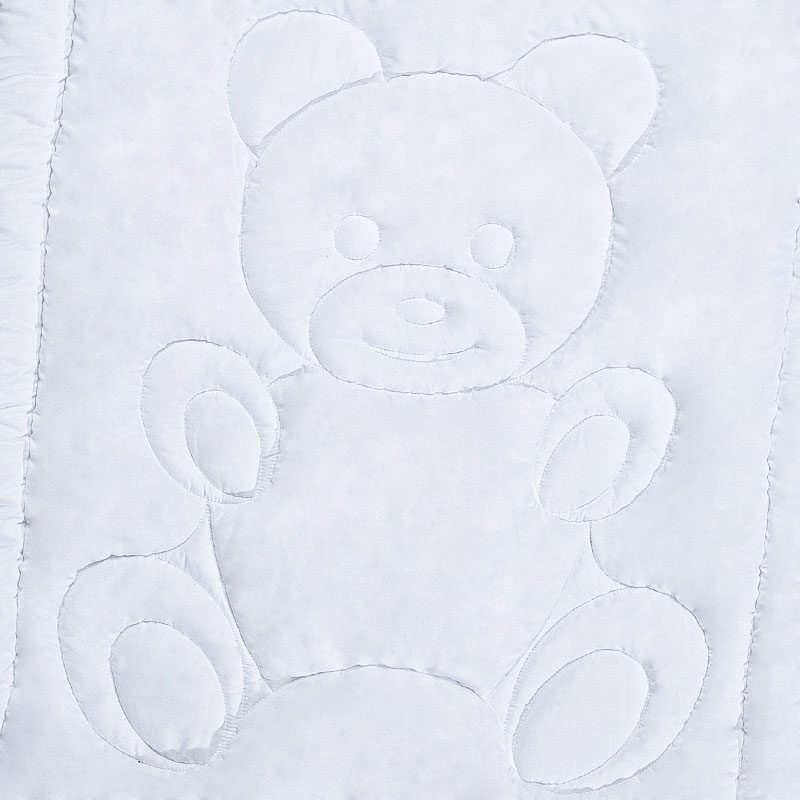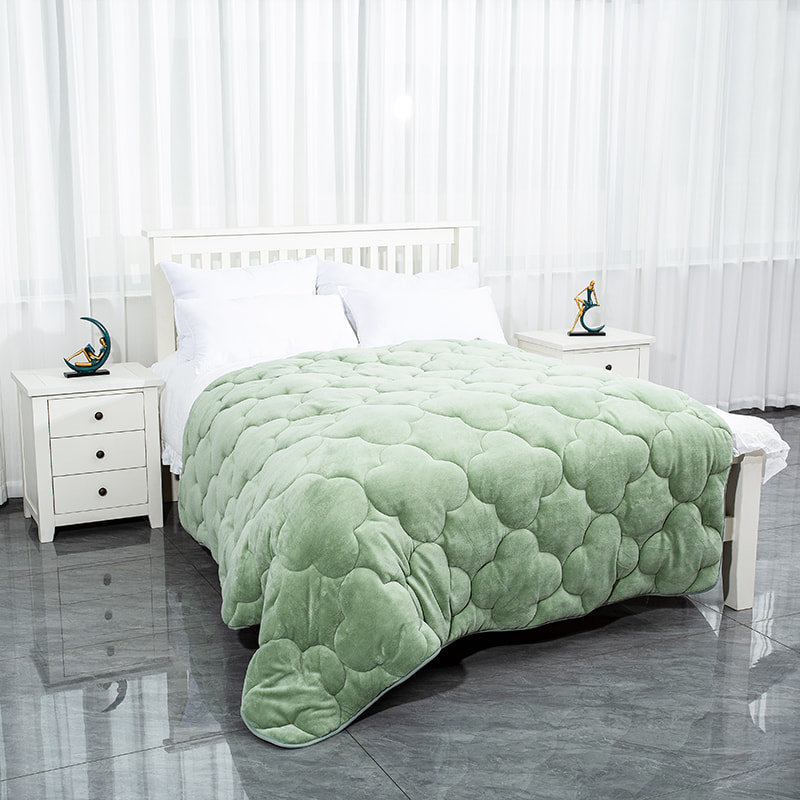What is Ultrasonic Quilting and Why Choose It?
Ultrasonic quilting represents a revolutionary advancement in textile manufacturing, offering a superior alternative to traditional stitching methods. This innovative technology uses high-frequency sound waves to bond fabric layers together, creating seamless, durable quilts without needles, threads, or conventional stitching. The Ultrasonic Plain Quilt emerges as a modern bedding solution that combines exceptional comfort with unparalleled durability, making it an ideal choice for those seeking both luxury and longevity in their bedding essentials.
The Science Behind Ultrasonic Quilting Technology
Ultrasonic quilting operates on principles of high-frequency vibration technology, where sound waves create heat through friction to bond synthetic fabrics at a molecular level. This process involves specialized equipment that uses vibrating horns to apply pressure and ultrasonic energy to fabric layers, causing the materials to fuse together permanently. The result is a perfectly bonded Ultrasonic Plain Quilt that maintains its integrity through countless washes and years of use, without the common issues of thread breakage or seam separation that plague traditional quilts.
- Molecular Bonding: Creates permanent seals between fabric layers without additional adhesives or threads
- Precision Engineering: Allows for intricate patterns and designs with absolute consistency across the entire surface
- Material Compatibility: Works exceptionally well with synthetic fabrics and blends, ensuring optimal bonding results
- Environmental Benefits: Reduces waste and energy consumption compared to traditional sewing methods
Advantages of Ultrasonic Plain Quilts Over Traditional Bedding
The Ultrasonic Plain Quilt offers numerous benefits that make it stand out in the world of bedding. Unlike traditionally stitched quilts, ultrasonic versions provide seamless comfort without the ridges and bumps created by sewing threads. This creates a smoother sleeping surface that enhances comfort while maintaining excellent thermal properties. The absence of needle holes means better insulation and no cold spots, while the bonded seams prevent fill shifting and ensure consistent warmth distribution throughout the quilt.
- Enhanced Durability: No threads to break or unravel, significantly extending the product's lifespan
- Superior Comfort: Smooth, seamless surface eliminates pressure points and provides even support
- Improved Hygiene: Fewer crevices for dust mites and allergens to accumulate, benefiting allergy sufferers
- Consistent Performance: Maintains shape and insulation properties through extensive use and cleaning
Traditional vs Ultrasonic Quilting Comparison
| Feature | Traditional Quilting | Ultrasonic Quilting |
| Construction Method | Needle and thread stitching | High-frequency sound wave bonding |
| Durability Concerns | Thread breakage, seam separation | No thread-related failures |
| Surface Texture | Ridged stitching lines | Smooth, seamless surface |
| Insulation Quality | Potential cold spots at stitches | Consistent insulation throughout |
| Maintenance | Thread maintenance required | Minimal maintenance needed |
Material Selection for Optimal Ultrasonic Quilting Results
The effectiveness of ultrasonic quilting heavily depends on selecting appropriate materials that respond well to the bonding process. Synthetic fabrics like polyester and poly-cotton blends achieve the best results due to their thermoplastic properties, which allow them to melt and bond under ultrasonic energy. The Ultrasonic Plain Quilt typically features high-quality synthetic fills that provide excellent loft and thermal regulation while ensuring successful bonding with the outer fabric layers. Material composition directly affects the quilt's performance, comfort, and longevity.
- Fabric Types: Polyester and synthetic blends offer optimal bonding characteristics and durability
- Fill Materials: Hollow fiber polyester, microfiber, and specialty synthetic fills provide warmth without weight
- Weight Considerations: Various GSM options available to suit different climate needs and personal preferences
- Quality Indicators: Look for consistent bonding, even fill distribution, and precise pattern execution
Design Versatility and Aesthetic Appeal of Plain Quilts
The simplicity of a plain quilt design, combined with ultrasonic technology, creates bedding that excels in both form and function. The Ultrasonic Plain Quilt offers a clean, minimalist aesthetic that complements any bedroom decor while showcasing the precision of ultrasonic bonding patterns. From subtle geometric designs to intricate artistic patterns, the quilting shows as raised areas that add visual texture without compromising comfort. The plain color palette serves as a versatile base that can be easily accessorized with colorful pillows and throws.
- Pattern Diversity: Endless design possibilities from simple squares to complex artistic patterns
- Color Fastness: Excellent color retention due to the bonding process that seals dyes in place
- Texture Variation: Raised and flat areas create visual interest and tactile appeal
- Style Adaptability: Complements modern, traditional, and contemporary interior designs equally well
Care and Maintenance of Ultrasonic Quilts
Proper care ensures your Ultrasonic Plain Quilt maintains its appearance and performance for years. The bonded construction makes these quilts remarkably easy to maintain, as there are no threads to break or seams to separate during washing. Most ultrasonic quilts are machine washable and dryable, though following specific manufacturer instructions is crucial for preserving the bonded areas. The durability of the ultrasonic bonds means the quilt can withstand regular commercial laundering, making it ideal for both home and hospitality use.
- Washing Guidelines: Typically machine washable in cold or warm water with mild detergents
- Drying Recommendations: Tumble dry on low heat to preserve bonding integrity
- Stain Removal: Bonded areas resist stain penetration, making spot cleaning effective
- Storage Solutions: Store flat or rolled to maintain bonding patterns and fill distribution
Ultrasonic Quilt Care Specifications
| Care Aspect | Recommended Method | Benefits |
| Washing Temperature | Cold to warm water (30-40°C) | Preserves bonding and colors |
| Drying Method | Low heat tumble dry | Maintains fill distribution and bonding |
| Ironing | Low heat if needed | Bonded areas resist wrinkling |
| Bleaching | Non-chlorine bleach only | Protects synthetic fibers and bonding |
Environmental and Health Benefits of Ultrasonic Quilting
The Ultrasonic Plain Quilt offers significant environmental advantages over traditionally manufactured bedding. The ultrasonic process consumes less energy than conventional sewing operations and generates no thread waste. From a health perspective, the seamless construction creates fewer places for dust mites and allergens to hide, making these quilts an excellent choice for allergy sufferers. The materials used are often hypoallergenic and resistant to microbial growth, contributing to a healthier sleeping environment.
- Energy Efficiency: Reduced power consumption compared to traditional sewing machines
- Waste Reduction: No thread waste and minimal material waste during production
- Health Considerations: Hypoallergenic properties and reduced allergen accumulation
- Sustainability Factors: Often made from recyclable materials with longer product lifespan
FAQ
How long does an ultrasonic quilt typically last compared to traditional quilts?
Ultrasonic quilts generally offer a significantly longer lifespan than traditional stitched quilts. While conventional quilts may show wear, thread breakage, or seam separation within 2-3 years of regular use, ultrasonic quilts typically maintain their integrity for 5-7 years or more. The bonded seams don't suffer from the common issues that affect stitched quilts, and the materials maintain their structural stability through repeated washing and use. Proper care can extend this lifespan even further, making ultrasonic quilts a superior long-term investment.
Can ultrasonic quilts be used by people with allergies or sensitive skin?
Yes, ultrasonic quilts are particularly suitable for individuals with allergies or sensitive skin. The seamless construction eliminates the tiny holes and crevices where dust mites and allergens typically accumulate in traditional quilts. Additionally, most ultrasonic quilts use hypoallergenic synthetic materials that resist microbial growth and are less likely to cause allergic reactions. The bonding process itself creates a more closed surface that prevents allergen penetration, while the easy-care nature allows for frequent washing to maintain a clean sleeping environment.
Are ultrasonic quilts suitable for all seasons?
Ultrasonic quilts are available in various weights and thicknesses to suit different seasonal needs. Lightweight versions (200-250 GSM) provide ideal comfort for summer months, while medium-weight options (250-300 GSM) work well for spring and autumn. Heavier ultrasonic quilts (300+ GSM) offer sufficient warmth for winter use. The consistent insulation provided by the bonded construction ensures there are no cold spots, making them effective across different temperature ranges. Some manufacturers also offer all-season ultrasonic quilts designed with balanced insulation properties for year-round comfort.
How does the cost of ultrasonic quilts compare to traditional quilts?
While the initial purchase price of ultrasonic quilts may be slightly higher than basic traditional quilts, they typically offer better long-term value. The reduced maintenance needs, longer lifespan, and consistent performance make ultrasonic quilts more cost-effective over time. When comparing quilts of similar quality and materials, ultrasonic versions often prove more economical due to their durability and resistance to common failure points. The investment in an ultrasonic quilt translates to fewer replacements and better performance throughout its lifespan.
Can ultrasonic quilts be repaired if damaged?
While ultrasonic quilts are designed for exceptional durability, if damage does occur, repair options are available though somewhat limited compared to traditional quilts. Small tears or separations can often be repaired using specialized bonding techniques or appropriate fabric adhesives. However, major damage to the bonded areas may require professional attention. It's worth noting that because ultrasonic quilts lack the stress points created by stitching, they're less likely to develop the types of damage that commonly affect traditional quilts, making repairs rarely necessary.

 English
English 中文简体
中文简体 Español
Español
 previous post
previous post
